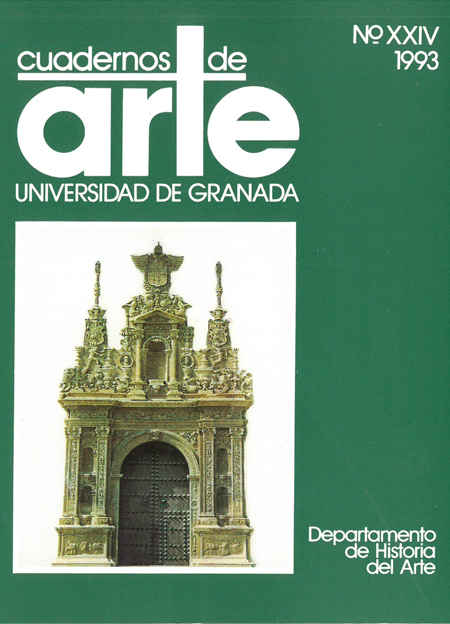Acerca del concepto humanista de la máquina. Una representación inédita en el contexto español
Abstract
This study aims to explore the significance that the machine achieves in the humanist period as a means of individual creation and as an artefact, "competing" with the creativity of nature. The complex interrelations between art, science and nature determine the different ways in which the machine has been considered as an instrument which combines aesthetics and technology. This is illustrated by a discussion of a previously unpublished example developed at the importan! stage of Spanish humanism comprising the end of the 16th and beginning of the 17th centuries, just as the unitary or "encyclopedic" concept of the Renaissance was falling apart under the influence of the Manneristic crisiswhich brought about the definitive divorce between the aesthetic and scientific treatment of nature.
Downloads
Download data is not yet available.
Downloads
Published
1993-11-10
How to Cite
Carneros Pardo, J. M., & Rubio Lapaz, J. (1993). Acerca del concepto humanista de la máquina. Una representación inédita en el contexto español. Cuadernos De Arte De La Universidad De Granada, 77–85. Retrieved from https://revistaseug.ugr.es/index.php/caug/article/view/10882
Issue
Section
Estudios
License
Los autores que publican en esta revista están de acuerdo con los siguientes términos:- Los autores conservan los derechos de autor y garantizan a la revista el derecho de ser la primera publicación del trabajo al igual que ser licenciado bajo una licencia Creative Commons que permite a otros compartir el trabajo con un reconocimiento de la autoría del trabajo y la cita de la fuente original, con un uso no comercial y siempre que no se hagan obras derivadas.
- Los autores pueden establecer por separado acuerdos adicionales para la distribución no exclusiva de la versión de la obra publicada en la revista (por ejemplo, situarlo en un repositorio institucional o publicarlo en un libro), con un reconocimiento de su publicación inicial en esta revista.
- Se permite y se anima a los autores a difundir sus trabajos electrónicamente (por ejemplo, en repositorios institucionales o en su propio sitio web) antes y durante el proceso de envío, ya que puede dar lugar a intercambios productivos, así como a una citación más temprana y mayor de los trabajos publicados (Véase The Effect of Open Access) (en inglés).


 ISSN-e: 2445-4567
ISSN-e: 2445-4567








